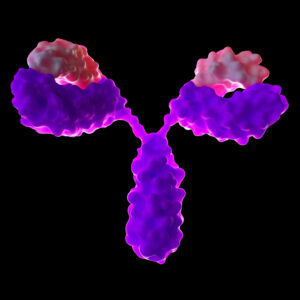Canine Heartworm
Canine heartworm disease is a serious and potentially fatal zoonotic parasitic disease of dogs, mainly located in temperate, tropical, and subtropical areas of the world. It is caused by foot-long worms (heartworms) that live in the heart, lungs and associated blood vessels of affected dogs, causing severe lung disease, heart failure and damage to other organs in the body. Heartworm disease can also affect other mammal species, including cats, wolves, coyotes, foxes, raccoons, sea lions and, in rare cases, humans.
Canine Heartworm Background
Canine heartworm (Dirofilaria immitis) is a parasitic nematode responsible for the canine heartworm disease. Transmitted from host-to-host via mosquito bites, infection largely affects the cardiopulmonary system resulting in severe and potentially fatal disease. The disease mostly affects temperate, tropical and subtropical areas of North, Central and South America, southern Europe, and Australia.
The prevalence of the disease is largely determined by the presence of mosquito vectors, usually Culex spp, Aedes and Anopheles spp. Mosquitoes act as an intermediate stage for Dirofilaria in order to complete their life cycle. The mosquitoes become infected whilst taking a blood meal from a host, and the microfilariae develop to the third-stage larvae (L3) in the malpighian tubules of the mosquitoes (Cancrini and Kramer, 2001), which are transmitted to the host while the mosquito is taking a blood meal, becoming sexually mature within a few months in the main pulmonary arteries and right ventricle (Morchón et al., 2012).
D. immitis adult worms can cause pulmonary artery blockage in dogs, leading to an illness that can include cough, exhaustion upon exercise, fainting, coughing up blood, and severe weight loss. Heartworm infection may result in serious complications for the host, typically culminating in the host’s death, most often as the result of secondary congestive heart failure. Wolbachia pipientis is an intracellular bacterium that is an endosymbiont of D. immitis and it is thought that all heartworms contain Wolbachia in varying amounts. These bacteria have been implicated as playing a role in the pathogenesis of filarial diseases, possibly through endotoxin production. Studies have shown that a primary surface protein of Wolbachia (WSP) induces a specific IgG response in hosts infected by D immitis (Todd-Jenkins, Karen., 2007).
There are no vaccines against canine heartworm and the only drug available to treat infection with adult heartworms is melarsomine dihydrochloride, an arsenical compound which kills both mature and some immature heartworms (Atkins, 2019). Diagnostic testing by ELISA, lateral flow immunoassay and rapid immunomigration techniques are now routinely used to detect heartworm antigen in the host’s blood and these have good levels of sensitivity and specificity.
References
- Atkins C. (2019). Heartworm Disease in Dogs. Merck Sharp & Dohme Corp (MSD) Veterinary Manual.
- Morchón (2012). Heartworm Disease (Dirofilaria immitis) and Their Vectors in Europe – New Distribution Trends. Front Physiol. 3: 196.
- Todd-Jenkins, Karen (2007). The Role of Wolbachia in heartworm disease. Veterinary Forum. 24 (10): 28–30.
Canine Heartworm Antibodies
The Native Antigen Company has three antibodies available, which are specific to canine heartworm, and suitable for diagnostic assay development and vaccine research.
Questions?
Check out our FAQ section for answers to the most frequently asked questions about our website and company.



